
Sound Librarian Gets Loud
Stephan Schütze’s free location recording workshop was all about giving back to the game sound community with a bang.
Photos: Nik Harrison
‘THHWHAAACCKKK!’ goes the tower of bricks as they topple over and slam into the makeshift wooden deck, followed by the tinkles of fragmentary aftershock. Satisfying though the initial sound is, it’s not what Stephan Schütze is listening for. As he cranes his ear towards the impact zone, he rebuilds the tower over and over again in different ways. Kicking, tipping, or nudging it to fall until he’s accumulated a satisfying collection of full-length brick-on-wood theatre.
Watching Schütze labour over each sound’s tail was a reminder of what makes great sound. Our attention is easily grabbed, but it’s the complexity of the aftermath that maintains our focus. Take a gun shot. Without the bullet impact, the spent shells ejecting and bouncing on the ground, the echo of the shot in its surroundings — all the crucial information — the ‘when’, ‘where’ and ‘how’ is lost, and it’s just another big bang.
BUILDING A LIBRARY
Schütze has a 15-year history composing music, recording and designing sound for games, but over the last few years he’s also been building a formidable library of sound effects for game sound and post production. He goes by the moniker of Sound Librarian, and demolishing mini brick towers is just part of the building process.
Over the years he’s amassed an ever-growing commercial sound effects library that’s now over 25,000 clips. The key to a good library, says Schütze, is variation. And he doesn’t skimp. Everything from 11 different stereo takes of a 1943 Tigermoth flying overhead to six variations of an 1851 .44 calibre Ruger pistol firing, thousands of ambient textures, everything you’d need to recreate any explosion and debris sound, and much, much, much more. It’s thorough, and well-recorded, which is why you’ll find it in every EA, Activision and Warner Brothers gaming studio around the world.
The main library is called the Foundation Sound Effects Library. An ever-growing collection of everything Schütze puts out, “from doors opening and closing, to cars, planes, and firearms,” he listed. “Then we’ve got five more niche libraries. One of them is called Elements, which is made up of 5000 sounds from the Foundation Library. All the banging and crashing stuff. A generatively-built 5.1 Ambient Textures library, as well as the Firearms Foley collection. I went to the Small Arms Factory Museum in Lithgow and spent three or four days archiving their collection. Not firing, but all the loading, unloading, cocking foley sounds for 60 different classic firearms.
“The Aviation Collection took 18 months to record. There are very few modern, high-quality digital captures of those sorts of vintage planes. But frankly, I did that one because I wanted to. It also means I’ve got work from it. A company, who’s got the best flight sim on mobile platforms at the moment, wants me to overhaul all the aircraft sounds.”
It’s part commercial enterprise, part labour of love. The Sound Library began as, and still is to a degree, a free Creative Commons online resource for Australian users. Schütze just wanted to see his compatriots get a leg up in the industry. But the costs of running the online venture have accumulated over the years, and donations haven’t really matched the cost, making it difficult to maintain the service. But Schütze is still committed to the idea, and at the moment the library is being rebuilt to provide a more robust service into the future.
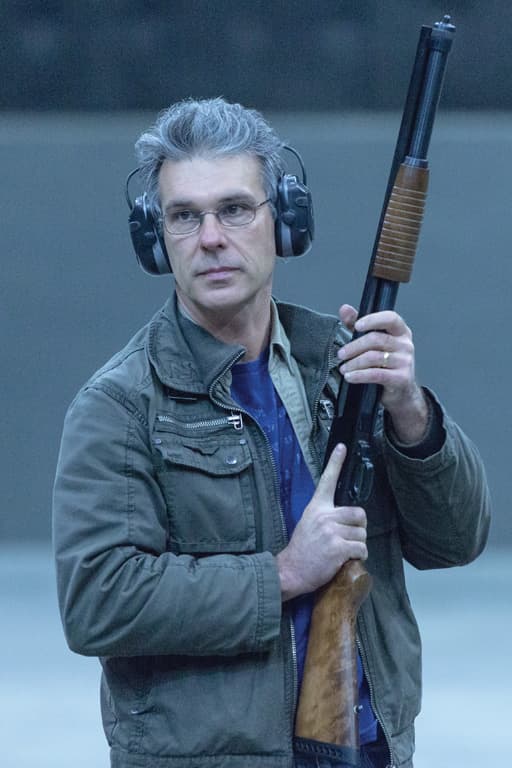
JUST PRESS RECORD
Despite the one-sided charity, it hasn’t stopped Schütze giving back to his community. For the second year running, he put on the Sound Librarian Recording Workshop in the massive 25,000 square foot soundstage at Melbourne’s Docklands Studios. Hence the ever-crashing pile of bricks. It’s an amazing event, and most unbelievably, entirely free.
Last year, 60 participants were treated to a recording masterclass involving flame throwers, dry ice creaking on metal, and plenty more. This year Schütze loaded the workshop with all the ‘fun’ stuff — explosions, motorbikes, guns and horror movie sounds. And it didn’t disappoint.
The main thrust of the workshop is to remind people it’s not about having the ‘right’ gear — if you’ve got something to record with, then record. As evidenced by the table full of portable Zoom recorders, so many of us are able to record in very decent quality, very easily with the things we already own. Schütze’s own favourite recording is an example of exactly that.
Schütze: “I was standing at a bullet train station seven hours from Tokyo in a little country town. And there was a train going to go past before mine. I thought, ‘great, I’ll record it.’ I had a little Edirol R-09, no fluffy on it. And thought: ‘Train, 250kph, not stopping at the station. There’s going to be a lot of wind noise.’ So I positioned myself with my back to the incoming direction of the train, and held the recorder close to my chest. The train hurtled through and I got one of the best recordings I’ve ever got. Because in Japan, people don’t talk. They were all standing at the station deathly silent. And because it’s in the country, there’s no traffic noise so I got a beautifully clean sound. You can hear it off in the distance, then it hammers through and out the other side, fading off into the distance. That was with a cheap recorder at 44.1kHz. The thing is, the content was really good, and I just had to think practically about the limitations of the device. That recording would stand up against anything I could do with a really expensive Sound Devices kit.”
I just had to think practically about the limitations of the device. That recording would stand up against anything I could do with a really expensive Sound Devices kit
These days, Schütze does have a Sound Devices 788T recorder, but he still uses plenty of portable recorders, because he can chuck one in a bag and never be without a recorder, but also because there are places you just wouldn’t put a $7000 piece of kit, let alone fit it. For instance, strapped to a motorbike going flat out. Or, if you look at it another way. If you’re trying to capture the interior sounds of a World War II fighter plane cockpit off the cuff at an airshow, getting a pilot’s approval to stick a portable recorder in his pocket is much more likely than asking him for an hour to rig up a complete kit and pass any safety regulations.
His advice though, before upgrading your recorder, is to spend money on microphones. “I’ve had a Sennheiser MKH60 shotgun for 12 years, and it’s been through hell and back, which is one of the reasons I use it. In all honesty, it sounds slightly muddy, but I’ve not come across anything else that has the same level of side cancellation. And recently Audio-Technica lent me one of the stereo shotgun mics developed for the Sydney Olympics. That allows me to have the rig I have now, which is two nice and thin shotgun mics in a blimp. That’s my general purpose rig if UFOs are invading and I need to grab a boom pole and run outside.”
If you’re using a separate microphone, one of the most important pieces of gear Schütze highlighted early on in the workshop is a simple Y-split XLR cable. It allows you to split the microphone signal onto two tracks of your recorder and set different levels for each — one to capture the majority of sounds and another to catch any instantaneous loud outbursts. “I typically set one to 10dB of gain, and one to 40dB,” said Schütze. “So quite a big range. In my point of view, it needs to be that much, or there’s no point. Generally the higher range will give me a good general capture. Where it starts to peak is if a car goes past directly in front of me, an aeroplane, a gunshot or a loud smash. And in those particular cases you’ll find those levels so extreme, you need to go all the way down to the other one anyway. If I’m sitting on the edge of a racetrack though, I crank everything right down.”
(above) Paul Norton of Portfire Studios volunteered his time for the workshop, and let rip with an Uzi, 12-guage shotgun, 9mm pistol, and a Magnum revolver. Safety first though.
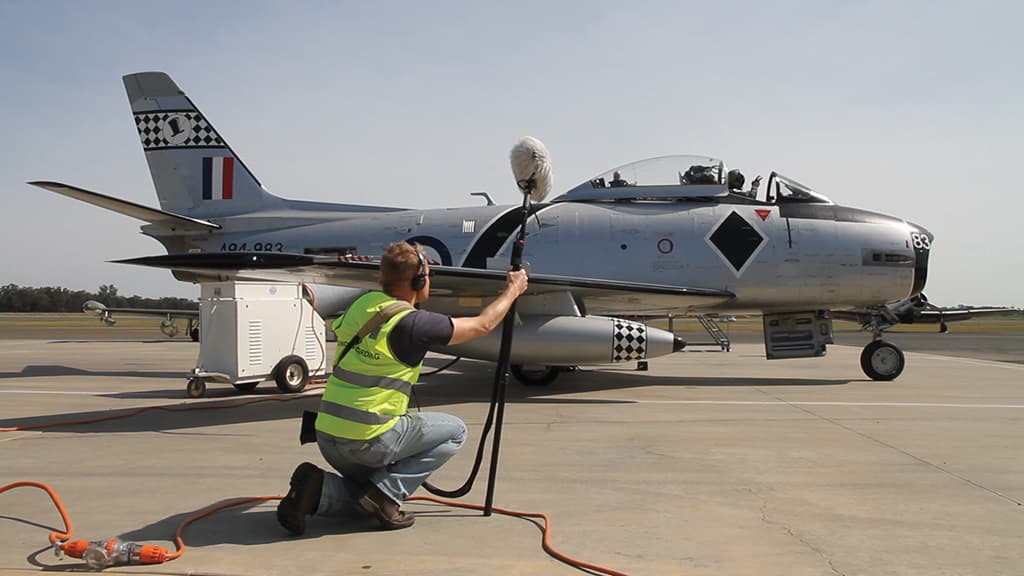
In the second year we got a franchise project for Universal Interactive. It was a Jurassic Park game, Operation Genesis, and I wrote an hour’s worth of Jurassic Park-style music. I was writing it with an old primitive orchestral sample library. They thought I’d nailed the music but the samples weren’t cutting it, so they asked me to find out what it would cost to use a real orchestra. Back then, the Aussie dollar was 50 cents to the US dollar, so we did the entire project with Melbourne Symphony Orchestra. It was the first ever orchestral game project in Australia, and the first time Melbourne Symphony Orchestra had worked on a game project.”
Schütze’s jack of all trades approach continues today. He even literally wrote the manual for FMOD Studio, one of two main platforms for game sound creation.
KICKING OFF WITH A BANG
The workshop began with recording the building blocks for destruction. Out came the bricks, planks of wood, textile shopping bags full of odds and ends to shake out onto the ground, glass panes, pipe, whacking sticks, and Schütze’s personal favourite, a couple of targa top pieces. Essentially half a targa roof band, which form a mini-ramp when laid on the ground, these beauties allow Schütze to turn what would be a dull thud into a more resonant impact because of the cavity underneath.
And often, it’s what’s underneath that really counts. You might think the sound of smashing glass on the ground is all you’d ever need for any glass foley, but puncturing a pane with a stick on a rubber-backed entrance mat delivers a usefully controlled sound more akin to a bullet hitting a window. It goes back to variety. Take the same material and drop or break it in different ways on varying surfaces and you give yourself a much better chance at delivering the right-sounding result.
Though one caveat Schütze mentions is a PVC pipe. It will always sound like a PVC pipe. While it seems like a good thing to whack things with, you’ll always have that hollow plastic sound on every recording. Unless it’s what you want, of course.
There’s also the old tricks of dropping sounds an octave to give a deeper rumble. It’s the main reason Schütze records in 96k now, so he doesn’t lose any detail when dropping effects down. He also demonstrated how easy it is to simulate much bigger towers of bricks falling by delaying multiple playbacks of similar recordings in time. The net effect is a tower of many more bricks that takes a lot longer to come down.
Mic positioning is often a balance of logic, safety and common sense. Motorbikes were next on the agenda. And Schütze went through the motions of miking up two bikes with the rider’s safety in mind. His two main points of capture ended up being tucked down behind the front windscreen and near the exhaust outlet at the rear of the bike (though not in its direct line). He used two DPA lavalier mics because they can handle high SPL, carefully snaking and tucking the cables along the fairing lines so as not to interfere with the rider. It all went into a small backpack on each rider.
He had the riders start each bike, leave it idle, then roll through the rev range pausing for half a minute at different rpm intervals, and finally give it a few quick bursts of gas before turning it off. It was a good demonstration of the importance of trying to capture continuous sound for use as sound effects. Otherwise you’ll never be able to loop and lengthen a clip. In a professional setting, all that would have been done with an electronically-controlled throttle to get a perfectly steady rev count, and on a dyno, to simulate the bike’s sound under load, which is quite different. To get more of those real-life sounds, Schütze sent the riders out on a half-hour jaunt.

SAFETY BURST
Schütze is a stickler for safety and proper protocols. Film and Television Armourer Paul Norton of Portfire Studios, and his assistant Matthew Weekes, donated their time to the workshop. And while it was impressive hearing Paul fire everything from a .44 calibre Magnum, to an Uzi, and 12-gauge shotgun loaded with blanks, it was the industry standard safety procedures that were the most informative. On set, the empty barrel is shown to the first AP before loading, and shown again after the weapon has been fired and cleared. The other crucial piece of information was that guns, even theatrical versions loaded with blanks are never pointed at people. Every shot where it seems that way in films, the angles are cheated. Paul demonstrated the devastating power of even the gas rushing out of a Magnum by firing a blank towards an empty soft drink can. Not only did it send the can flying 20m, it blew a hole clean through it too.
The specifics of blank-firing guns is a science in itself. The gunpowder formulas can be altered to give different results. On the day, Paul gave a brief estimation of how close to the real sound each weapon was delivering with blanks, and most were about 70-80% true. But to the untrained ear, the sound of them being fired in the cavernous sound stage was impressive indeed.
DOCKING THE COST
While the Docklands sound stage kindly donates the space for the workshop — because Schütze offers free entry — last year, the event still cost Schütze almost two grand to put on. This year he had an army of volunteers, and some loaner gear to help ease the burden. Amber Technology lent some DPA mics, John Barry helped out with a second Sound Devices 788T, and Dynamic Music sent some extra Zoom recorders down, though unfortunately a courier stuff up meant they arrived one day too late.
It still cost Schütze to put it on, but he wants to keep doing it because he loves the game industry. “There’s almost no ego at all,” he said. “In other sectors there’s this hesitance about ‘giving away secrets.’ I actually had someone say to me about the workshop, ‘you shouldn’t be doing this, you’re giving away all your secrets!’ They’re not my secrets, this is just stuff I know.” So if we get the privilege of a third Sound Recording Workshop from the Sound Librarian, make sure you get along.

The cavernous main sound stage at Docklands Studio in Melbourne where the workshop was held.


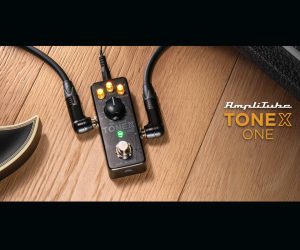




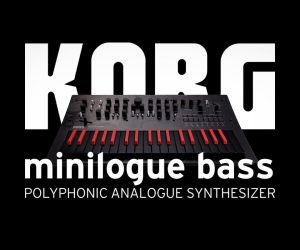
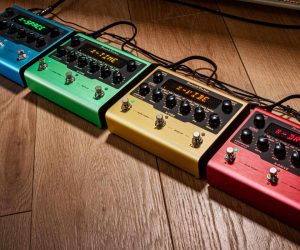







RESPONSES